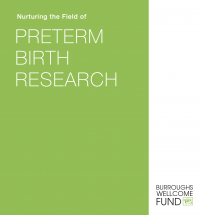 A successful human pregnancy, the assembly of an entire person within a closely confined space, is a feat that depends on precise timing. Each layer of cells and every incremental stage of development has its appropriate point in the sequence.
A successful human pregnancy, the assembly of an entire person within a closely confined space, is a feat that depends on precise timing. Each layer of cells and every incremental stage of development has its appropriate point in the sequence.
Nevertheless, as with any intricately coordinated process, there can occasionally be a hitch in the timing, and in the case of pregnancy this means risk. Babies born with less than a full term of gestation may be vulnerable to a range of health problems, from the mild and short-lived to severe and lasting. Such is the situation of some 380,000 preterm babies born in 2016 in the United States—a prevalence of almost 10 percent, one of the highest rates among industrialized nations.
There appears to be no single explanation for this high rate in our country, or for preterm birth in general. It’s not surprising that this should be the case, says Jerome Strauss, pro- fessor of obstetrics and gynecology at Virginia Commonwealth University. Since 2009, when the Burroughs Wellcome Fund launched a grants program called the Preterm Birth Initiative (PTBI), Strauss has served on the program’s advisory committee. In his words, “We don’t really understand what determines the length of normal gestation, let alone the factors that interfere with the normal course.”
By Sandra Ackerman
Download the full article:
![]() BWF Pre-Term Birth Pamphlet
BWF Pre-Term Birth Pamphlet
